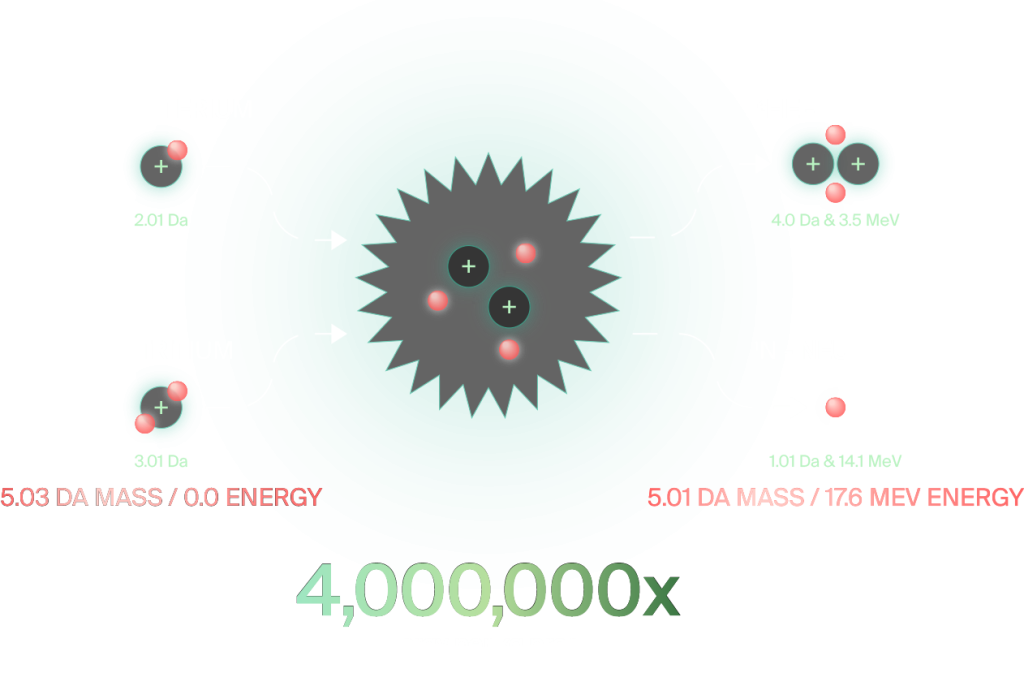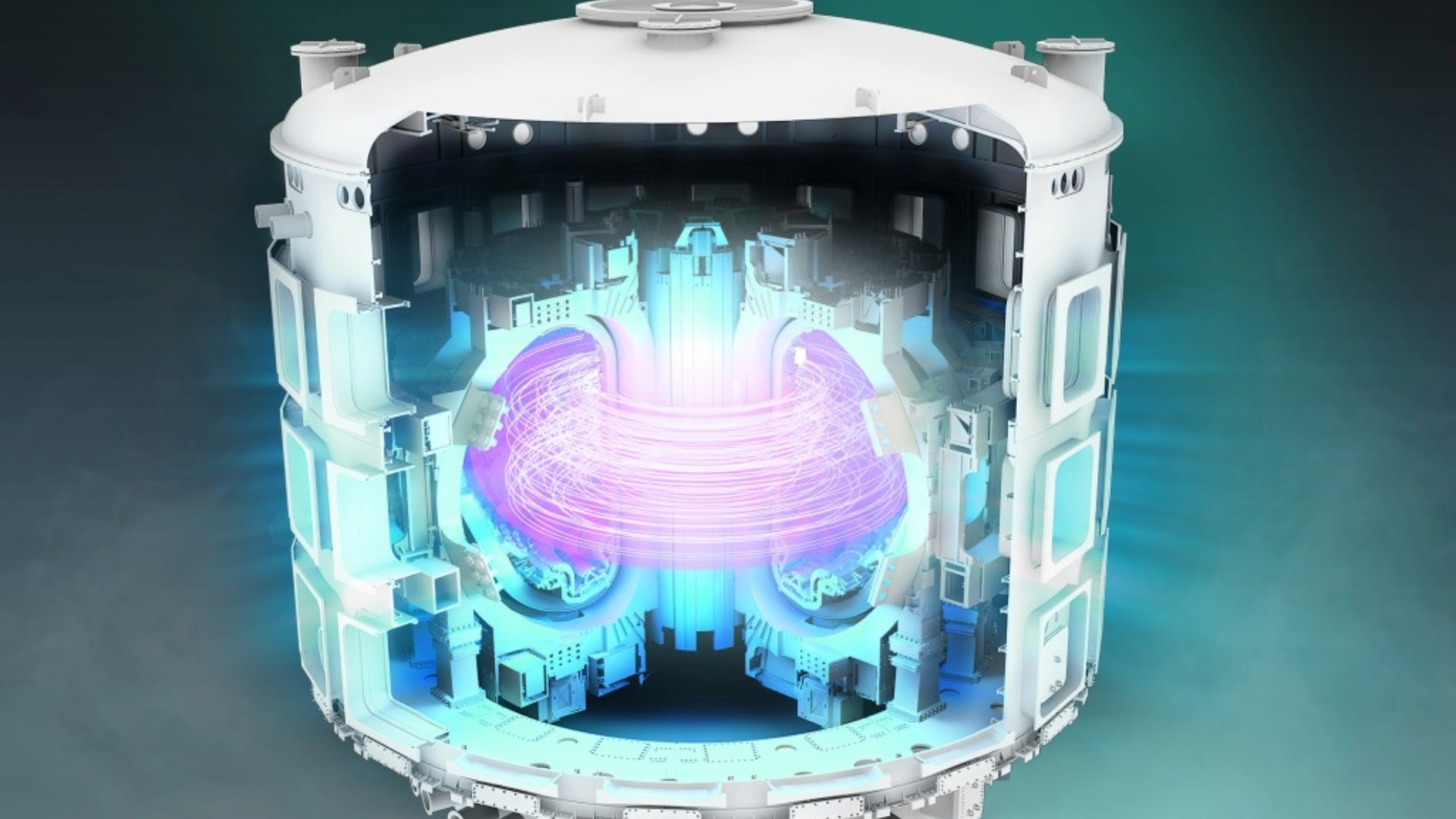
Nuclear fusion
Often referred to as the energy of the stars, nuclear fusion is a limitless source of energy. The fuel for fusion is abundant on Earth, and its industrialization is within reach.
Nuclear fusion is the most promising energy producting capacity
Nuclear fusion is the reaction in which two light atomic nuclei fuse together to
form a single nucleus, releasing a large amount of energy

Fusion technologies benefits

No nuclear accident risk
Fusion reaction stops if not supplied

Little & manageable nuclear waste
Short half-life for limited waste components

Strong social acceptance
Society aligns on fusion tech, unlike fission

Highly dispatchable
Can be turned on in a few minutes

Abundant and self-generated fuel
Strong quantity of Deuterium on Earth

High energy production
High density energy, 4Mx more than oil or coal
Energy generation by nuclear fusion is already a reality
Fusion requires extreme conditions to happen, including temperature up to 100M°C. It happens everyday in the Sun thanks to its
gravitational confinement force, and it has already been reproduced on Earth using laser inertial confinement

Gravitational confinement
Impossible on Earth
Plasma is confined by the force of gravity
• Plasma density (Ƞ): 10,000 x solid
• Temperature: 10,000,000 °C
• Confinement time (τ): 100,000 years
It is physically impossible to replicate
the gravitational force and
confinement times of our stars on
planet Earth

Magnetic confinement
Feasibility yet to be demonstrated
Plasma is confined by powerful magnetic fields
• Plasma density (Ƞ): solid / 100.000.000
• Temperature: 100,000,000 °C
• Confinement time (τ): Few seconds
Launched in 2007 with an initial budget of €6.3Bn, the ITER project has yet to demonstrate its viability, despite spending €22 billion
(Source ITER ORGANIZATION)

Laser inertial confinement
Proven net energy generation
Plasma is confined by the force of gravity
• Plasma density (Ƞ): 1,000 x solid
• Temperature: 100,000,000 °C
• Confinement time (τ): 10 picoseconds
Dec.22, the NIF achieved fusion “ignition” by hitting a Deuterium-Tritium target with high energy lasers, generating a net energy gain
(Source NIF/LLNL)
Energy generation by nuclear fusion is already a reality
Fusion requires extreme conditions to happen, including temperature up to 100M°C. It happens everyday in the Sun thanks to its
gravitational confinement force, and it has already been reproduced on Earth using laser inertial confinement

Gravitational confinement
Impossible on Earth
Plasma is confined by the force of gravity
• Plasma density (Ƞ): 10,000 x solid
• Temperature: 10,000,000 °C
• Confinement time (τ): 100,000 years
It is physically impossible to replicate
the gravitational force and
confinement times of our stars on
planet Earth

Magnetic confinement
Feasibility yet to be demonstrated
Plasma is confined by powerful magnetic fields
• Plasma density (Ƞ): solid / 100.000.000
• Temperature: 100,000,000 °C
• Confinement time (τ): Few seconds
Launched in 2007 with an initial budget of €6.3Bn, the ITER project has yet to demonstrate its viability, despite spending €22 billion
(Source ITER ORGANIZATION)

Laser inertial confinement
Proven net energy generation
Plasma is confined by the force of gravity
• Plasma density (Ƞ): 1,000 x solid
• Temperature: 100,000,000 °C
• Confinement time (τ): 10 picoseconds
Dec.22, the NIF achieved fusion “ignition” by hitting a Deuterium-Tritium target with high energy lasers, generating a net energy gain
(Source NIF/LLNL)
NIF experiment
In 2022, NIF achieved generating 3.15 MJ of fusion energy after delivering 2.05 MJ of laser energy to a D-T target with 192 laser beams, using indirect drive, a very low efficiency scheme where 90% of laser energy is lost.
NIF Expirement
In 2022, NIF achieved generating 3.15 MJ of fusion energy after delivering 2.05 MJ of laser energy to a D-T target with 192 laser beams, using indirect drive, a very low efficiency scheme where 90% of laser energy is lost.

Contact us
Do you have any questions? Don’t hesitate to write to us.
We’re here to help!





